It was during my tenure as Executive Director, World Bank, at Washington DC, that the catastrophe of 9/11 took place. In the aftermath of the tragedy, it became fashionable for every think-tank to discuss two questions: ‘What went wrong?’ and ‘Why people hate us (Americans)’? I happened to attend one such meeting barely ten days after the catastrophe. The gathering was impressive; I was seated almost opposite the Chairperson.
The guest speaker had concluded on the somber note of the need for building a coalition of nations against terrorism. He also spoke of the radicalization of Islam, values of religious pluralism, and the need for tolerance. The presentation over, the Chairperson asked for comments and looked at me. She said that India may have the answer in view of its heritage of pluralism and originality of mind, and gave me the floor. I was not prepared. I recall having said then that ‘while India may have the answer, I do not’ and went on to narrate my experiences in handling terrorism in India.
I have been contemplating this theme since then with a view to exploring an enduring framework for a global public policy – a policy for harmony among different peoples and societies in the post 9/11 world as seen through the lens of the Indian civilizational experience.
I was drawn to an attitude that has greatly contributed to the enrichment of Indian life: ‘respect for another person’s view of truth with hope and belief that he or she may be right’. This is best expressed in the Rigvedic hymn that enjoins: Ekam Sad Vipra Bahudhā Vadanti (The Real is one, the learned speak of it variously).
Etymologically speaking, the word Bahudha is derived from the word bahu, and dha is suffixed to it to make it an adverb. ‘Bahu’ denotes many ways or parts or forms or directions. It is used to express manifoldness, much and repeatedly. When the word is used with the root kri, it means to make manifold or multiply. Bahudha is also used as an expression of intermittent continuity in various time frames. It is used to express frequency, as in ‘time and again’. In the present or continuum, a dialogue of harmony, and peaceful living in society.
Pluralism could be the closest equivalent to Bahudha in the English language. But Bahudha denotes much more than pluralism as dharma conveys more than religion. Pluralism has been described in various ways in history, sociology, and politics. Pluralism has also been seen in the context of the coexistence of nation-state and ethnicity, equality, and identity issues.
The Bahudha approach recognizes that there is a distinction between plural societies and pluralism. Pluralism is an inevitable ingredient of democratic societies. The role of religion, language and ethnicity is very significant in plural societies. Pluralism in this context is an imperative for both developed and developing societies.
Pluralist societies are necessarily multi-ethnic, multi-religious, and multilingual societies. In such societies, there are various boundaries: racial, linguistic, religious, and at times even ideological. The Bahudhā approach does not believe in annexation or transgression of boundaries or assimilation of identities and propagation of a simplistic world view. It merely facilitates dialogue and thereby promotes understanding of the collective good. The realization of one’s own identity may sustain boundaries and yet, at the same time, understanding of other identities may help formulate a public policy of harmony. The Bahudhā approach is conscious of the fact that societies without boundaries are not possible.
The culture of Bahudhā is deeply rooted in the inculcation of a special attitude from an early age. Dialogue requires a state of mind where one can strongly believe in one’s own way of looking at issues while simultaneously accommodating another’s point of view. It is this mental discipline that makes one willing to consider the validity of other person’s view point.
In short, the Bahudhā approach is both a celebration of diversity and an attitude of mind that respects another person’s point of view. Democracy and dialogue are central to this approach.
In my view, the problem lies in over-emphasizing the commonly shared belief among believers of various religions that there is only ‘one truth’. There may not be any problem in supporting this view so long as it relates to the quest for truth. However, problems arise in its practice. Most of the religions have a single ‘god’ and a single ‘scripture’. The believer of such a religion thinks that their ‘god’ is supreme and that their ‘scripture’ contains all the truth. The fundamentalist groups go on to insist on scrupulous adherence to every tenet of the scripture notwithstanding enormous changes in ground realities based on new discoveries negating age-old beliefs and prescriptions. A scripture is a man-made document formulated by a saint in his state of enlightened consciousness. Such a document cannot be applicable to all times and to all people. It may not contain answers to all human problems of an inter-dependent world.
The Bahudhā approach could be secured particularly through (i) religious harmony; (ii) educational programming; (iii) strengthening of international political architecture: the United Nations; and (iv) the use of military power in terms of the UN Charter.
The rise of terrorist activities in different parts of the world demand military action by nation-states. It, however, does not mean that military can be used in an arbitrary fashion. The force is to be used in terms of international law and the UN Charter.
Education has a central role to play in building a harmonious society. Education must begin at home as it is here that intolerance towards other faiths has its origins. We know that it is not only love and compassion but also hatred and intolerance that are widespread. Just as people can be taught to hate, they can also learn to treat others with love, dignity, and respect. In fact, the issue of a public policy of harmony is critically linked with education. There is an urgent need to focus on the educational curriculum in order to purge it of content that spreads hatred and/or distorts history. Effective education also demands the development of a creative mind and scientific temper.
Resolving conflict, however, goes much beyond education. Towards this end, the UN has to be strengthened in terms of its Charter so that it becomes an effective conflict resolution organization. The global political order must reflect the best interests, rules, and practices that states hold in common.
The UN is the best forum for generation of understanding among nation-states in the realm of politics and economy. It can also be a forum where dialogue among nations can be initiated and sustained. Such dialogues can support efforts towards peace and attempts to resolve conflicts between groups and nations.
As we look towards the future, it appears that the prevailing state system would continue to be a primary body. An international order based on the rule of law and consent of nation-states can alone be an effective conflict resolution mechanism.
The number of people who see in the Bahudha approach the potential of opening a series of opportunities for resolution of conflicts and for building a harmonious society and a global order as against the widely publicized theory of the clash of civilizations is on the rise.
(Balimiki Prasad Singh, former Governor of Sikkim and Home Secretary, Govt. of India, has propounded the theory of the Bahudha approach as an alternative to the theory of the Clash of Civilizations advanced by Samuel P. Huntington.)
Published Date: 23rd May 2016
(Disclaimer: The views and opinions expressed in this article are those of the author and do not necessarily reflect the official policy or position of the Vivekananda International Foundation)


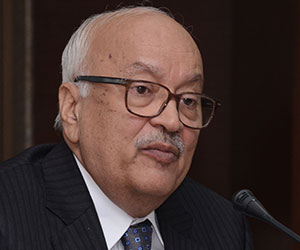
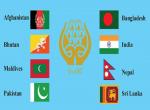

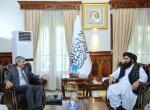
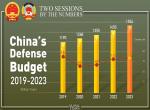
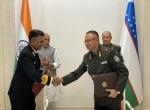

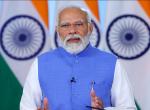
Post new comment